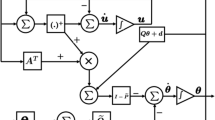Abstract
The problem of generating surgery schedules is formulated as a mathematical model with probabilistic constraints. The approach presented is a new method for tackling probabilistic constraints using machine learning. The technique is inspired by models that use slacks in capacity planning. Essentially support vector classification is used to learn a linear constraint that will replace the probabilistic constraint. The data used to learn this constraint is labeled using Monte Carlo simulations. This data is iteratively discovered, during the optimization procedure, and augmented to the training set. The linear support vector classifier is then updated during search, until a feasible solution is discovered. The stochastic surgery model presented is inspired by real challenges faced by many hospitals today and tested on real-life data.
Access this chapter
Tax calculation will be finalised at checkout
Purchases are for personal use only
Similar content being viewed by others
References
Cappanera, P., Visintin, F., Banditori, C.: Addressing conflicting stakeholders’ priorities in surgical scheduling by goal programming. Flex. Serv. Manuf. J. 30(1), 252–271 (2018). https://doi.org/10.1007/s10696-016-9255-5
Cardoen, B., Demeulemeester, E., Beliën, J.: Operating room planning and scheduling: a literature review. Eur. J. Oper. Res. 201(3), 921–932 (2010). https://doi.org/10.1016/j.ejor.2009.04.011. http://www.sciencedirect.com/science/article/pii/S0377221709002616
Denton, B., Miller, A.J., Balasubramanian, H.J., Huschka, T.R.: Optimalallocation of surgery blocks to operating rooms under uncertainty. Oper. Res. 58(4–part–1), 802–816 (2010). https://doi.org/10.1287/opre.1090.0791
Fan, R.E., Chang, K.W., Hsieh, C.J., Wang, X.R., Lin, C.J.: LIBLINEAR: a library for large linear classification. J. Mach. Learn. Res. 9(Aug), 1871–1874 (2008)
Guido, R., Conforti, D.: A hybrid genetic approach for solving an integrated multi-objective operating room planning and scheduling problem. Comput. Oper. Res. 87(Supplement C), 270–282 (2017). https://doi.org/10.1016/j.cor.2016.11.009. http://www.sciencedirect.com/science/article/pii/S0305054816302684
Gurobi Optimization, Inc.: Gurobi optimizer reference manual (2018). http://www.gurobi.com
Hans, E., Wullink, G., van Houdenhoven, M., Kazemier, G.: Robust surgery loading. Eur. J. Oper. Res. 185(3), 1038–1050 (2008). https://doi.org/10.1016/j.ejor.2006.08.022.<Go to ISI>://WOS:000251070500011
Kroer, L.R., Foverskov, K., Vilhelmsen, C., Hansen, A.S., Larsen, J.: Planning and scheduling operating rooms for elective and emergency surgeries with uncertain duration. Oper. Res. Health Care (2018). https://doi.org/10.1016/j.orhc.2018.03.006
Lamiri, M., Xie, X., Dolgui, A., Grimaud, F.: A stochastic model for operating room planning with elective and emergency demand for surgery. Eur. J. Oper. Res. 185(3), 1026–1037 (2008). https://doi.org/10.1016/j.ejor.2006.02.057. http://www.sciencedirect.com/science/article/pii/S0377221706005832
Marques, I., Captivo, M.E.: Different stakeholders’ perspectives for a surgical case assignment problem: deterministic and robust approaches. Eur. J. Oper. Res. 261(1), 260–278 (2017). https://doi.org/10.1016/j.ejor.2017.01.036. http://www.sciencedirect.com/science/article/pii/S0377221717300711
Min, D., Yih, Y.: Scheduling elective surgery under uncertainty and downstream capacity constraints. Eur. J. Oper. Res. 206(3), 642–652 (2010)
Molina-Pariente, J.M., Hans, E.W., Framinan, J.M.: A stochastic approach for solving the operating room scheduling problem. Flex. Serv. Manuf. J. (2016). https://doi.org/10.1007/s10696-016-9250-x
Neyshabouri, S., Berg, B.P.: Two-stage robust optimization approach to elective surgery and downstream capacity planning. Eur. J. Oper. Res. 260(1), 21–40 (2017). https://doi.org/10.1016/j.ejor.2016.11.043. http://www.sciencedirect.com/science/article/pii/S0377221716309687
van Oostrum, J.M., Van Houdenhoven, M., Hurink, J.L., Hans, E.W., Wullink, G., Kazemier, G.: A master surgical scheduling approach for cyclic scheduling in operating room departments. OR Spectr. 30(2), 355–374 (2008). https://doi.org/10.1007/s00291-006-0068-x
Riise, A., Mannino, C., Burke, E.K.: Modelling and solving generalised operational surgery scheduling problems. Comput. Oper. Res. 66, 1–11 (2016)
Samudra, M., Van Riet, C., Demeulemeester, E., Cardoen, B., Vansteenkiste, N., Rademakers, F.E.: Scheduling operating rooms: achievements, challenges and pitfalls. J. Sched. 19(5), 493–525 (2016). https://doi.org/10.1007/s10951-016-0489-6
Spangler, W.E., Strum, D.P., Vargas, L.G., May, J.H.: Estimating procedure times for surgeries by determining location parameters for the lognormal model. Health Care Manag. Sci. 7(2), 97–104 (2004)
Acknowledgement
The author would like to acknowledge the National University Hospital of Iceland for providing data, insights and support for this project.
Author information
Authors and Affiliations
Corresponding author
Editor information
Editors and Affiliations
Rights and permissions
Copyright information
© 2020 Springer Nature Switzerland AG
About this paper
Cite this paper
Runarsson, T.P. (2020). Learning Probabilistic Constraints for Surgery Scheduling Using a Support Vector Machine. In: Matsatsinis, N., Marinakis, Y., Pardalos, P. (eds) Learning and Intelligent Optimization. LION 2019. Lecture Notes in Computer Science(), vol 11968. Springer, Cham. https://doi.org/10.1007/978-3-030-38629-0_10
Download citation
DOI: https://doi.org/10.1007/978-3-030-38629-0_10
Published:
Publisher Name: Springer, Cham
Print ISBN: 978-3-030-38628-3
Online ISBN: 978-3-030-38629-0
eBook Packages: Mathematics and StatisticsMathematics and Statistics (R0)




